Beschreibung
Einführung von Bidirektionale Pipeline Schwein
Ein bidirektionaler Rohrmolch ist ein Spezialgerät zur Reinigung und Wartung von Rohrleitungen. Es hat eine scheibenförmige Konstruktion mit einem Durchmesser, der etwas kleiner ist als der Innendurchmesser der Rohrleitung. Die Dichtungsplatte des bidirektionalen Molchs ist so konzipiert, dass sie in besonderem Maße an den Innendurchmesser der Rohrleitung anpasst. Dadurch kann der Molch eine Bewegung in beide Richtungen ausführen, was ihn äußerst nützlich bei der Reinigung von Rohrleitungsabfällen macht.
Einer der Hauptvorteile des Einsatzes eines bidirektionalen Pipeline-Molches ist seine Fähigkeit, Rückblasvorgänge durchzuführen, die dazu beitragen können, Verstopfungen in der Pipeline zu beseitigen. Dies macht es zur perfekten Wahl für den Einsatz vor der Inbetriebnahme der Pipeline, da es dazu beitragen kann, potenzielle Probleme zu verhindern und sicherzustellen, dass die Pipeline von Anfang an effizient läuft.
Vorteile der Verwendung von bidirektionalen Pipeline-Molchen
Effektive Reinigung: Einer der Hauptvorteile bidirektionaler Pipeline-Molche ist ihre außergewöhnliche Reinigungsfähigkeit. Sie wurden entwickelt, um Ablagerungen, Schmutz und andere Verunreinigungen effektiv von den Innenwänden von Rohrleitungen zu entfernen. Dadurch wird sichergestellt, dass die Rohrleitung sauber bleibt und optimal funktioniert, was für die Aufrechterhaltung der Effizienz und den reibungslosen Betrieb von Rohrleitungssystemen von entscheidender Bedeutung ist.
Backblowing-Vorgang: Bidirektionale Pipeline-Molche sind mit der einzigartigen Fähigkeit ausgestattet, sich innerhalb der Pipeline in beide Richtungen zu bewegen. Durch diese Zwei-Wege-Bewegung können sie für Rückblasvorgänge eingesetzt werden, wodurch Verstopfungen wirksam beseitigt und die Sauberkeit gewährleistet wird, bevor die Rohrleitung in Betrieb genommen wird. Diese Hin- und Herbewegung ist ein wesentlicher Vorteil, der die Funktionalität und Nützlichkeit dieser Molche in verschiedenen Bereichen der Rohrleitungsreinigung und -wartung verbessert.
Vielseitigkeit: Die Vielseitigkeit bidirektionaler Pipeline-Molche ist ein weiterer wesentlicher Vorteil. Sie können in verschiedenen Arten von Rohrleitungen eingesetzt werden, darunter solchen, die Wasser, Öl, Gas und andere Flüssigkeiten transportieren. Dies macht sie zu einem leistungsstarken Werkzeug im Arsenal der Pipeline-Wartung, das für eine Vielzahl von Branchen und Anwendungen geeignet ist.
Materialien bidirektionaler Pipeline-Molche
Polyurethan im Bau von bidirektionalen Pipeline-Molchen
Eines der am häufigsten verwendeten Materialien bei der Herstellung von bidirektionalen Rohrmolchen ist Polyurethan. Polyurethan ist ein vielseitiges Material, das für seine Haltbarkeit und hervorragende Verschleißeigenschaften bekannt ist und sich daher ideal für den Umgang mit rauen Bedingungen in Rohrleitungen eignet. Es kann zur Herstellung verschiedener Komponenten des Rohrleitungsmolchs verwendet werden, darunter Becher und Scheiben. Aus Polyurethan gefertigte Komponenten sind für Reinigungsvorgänge von Vorteil, da sie Schmutz und Ablagerungen effektiv abstreifen und gleichzeitig die Integrität der Rohrleitung aufrechterhalten. Darüber hinaus ermöglichen die Flexibilität und Widerstandsfähigkeit von Polyurethan den Molchen, durch Biegungen und Durchmesseränderungen in der Rohrleitung zu navigieren, was ihre Effektivität und Vielseitigkeit erhöht.
Die Rolle von Edelstahl und Kohlenstoffstahl
Für den Aufbau des Skeletts oder Körpers des Schweins werden typischerweise Metalle wie Edelstahl 304 (304SS), Edelstahl 316 (316SS), Edelstahl 316L (316LSS), Inconel und Kohlenstoffstahl verwendet. Diese Materialien werden aufgrund ihrer Festigkeit, Haltbarkeit und Korrosionsbeständigkeit ausgewählt – entscheidende Eigenschaften angesichts der unterschiedlichen Bedingungen innerhalb der Pipeline. Beispielsweise werden 316SS und 316LSS aufgrund ihrer überlegenen Korrosionsbeständigkeit häufig in korrosiveren Umgebungen eingesetzt. Kohlenstoffstahl hingegen bietet ein ausgewogenes Verhältnis von Festigkeit und Duktilität und ist daher eine ausgezeichnete Wahl für den Schweinekörper.
Materialauswahl und -anpassung
Die Auswahl der Materialien für bidirektionale Rohrmolche ist nicht pauschal. Dies hängt von mehreren Faktoren ab, darunter der Art der in der Rohrleitung transportierten Flüssigkeit, der Betriebstemperatur und dem Betriebsdruck sowie dem Durchmesser und der Länge der Rohrleitung. Einige Pipelines erfordern möglicherweise Molche mit höherer Korrosionsbeständigkeit, während andere Molche benötigen, die extremen Temperaturen standhalten. Daher bieten Hersteller Anpassungsoptionen an, die es Pipelinebetreibern ermöglichen, die Materialien auszuwählen, die am besten zu ihren spezifischen betrieblichen Anforderungen passen. Diese Flexibilität bei der Materialauswahl stellt sicher, dass die bidirektionalen Pipelinemolche ihre Reinigungs- und Wartungsaufgaben unter verschiedenen Pipelinebedingungen effektiv durchführen können.
Warum ein bidirektionales Pipeline-Molch verwenden?
Pipelines sind anfällig für Schmutz und Ablagerungen wie Zunder, Ölablagerungen, Wachs und Kokskohle, die sich im Laufe der Zeit an ihren Innenwänden ansammeln können. Diese Ablagerungen können den Flüssigkeitswiderstand erhöhen, was zu einer geringeren Übertragungseffizienz, einem höheren Stromverbrauch und möglichen Schäden an Rohrleitungsmaterial führt. Pipeline-Verstopfungen können in manchen Situationen möglicherweise zu Brüchen, Flüssigkeitslecks und Produktionsunterbrechungen führen, was erhebliche wirtschaftliche und sicherheitstechnische Probleme mit sich bringt.
Eine regelmäßige Reinigung der Rohrleitungen ist von entscheidender Bedeutung, um diesen Problemen vorzubeugen und die Effizienz und Sicherheit der Rohrleitungen zu gewährleisten. Während es mehrere Methoden zur Reinigung von Rohrleitungen gibt, darunter chemische Reinigung, Ultraschallreinigung und Wasserstrahlreinigung, ist die Verwendung eines bidirektionalen Rohrmolchs eine einfache, kostengünstige und effiziente Option, insbesondere in der Anfangsphase, wenn nur wenig Schmutz und Ablagerungen vorhanden sind.
Schlüsselkomponenten von Schweinisch Ausrüstung
Molchausrüstung ist ein wichtiger Bestandteil, um Rohrleitungen in gutem Zustand und reibungslosem Betrieb zu halten. Es verbessert die Effizienz der Pipeline, prüft auf Umfangsverformungen wie Stoßverformungen, prüft auf Metallschäden innerhalb der Pipeline wie Korrosion und reinigt neue Pipelines nach Dichtheitsprüfungen, um Flüssigkeitsansammlungen und Verunreinigungen zu entfernen. Da Molchanlagen so wichtig sind, müssen sie entsprechend den spezifischen Betriebsanforderungen entworfen und installiert werden. Molchmelder müssen beispielsweise die richtige Größe und Form haben, um sicher zu funktionieren und anpassungsfähig zu sein. Die Einhaltung relevanter Designspezifikationen ist entscheidend für die Optimierung der Leistung und Sicherheit dieser wichtigen Rohrleitungskomponente.
Häufige Risiken im Zusammenhang mit Molchvorgängen
Schwein blieb stecken
Rohrleitungsmolche können durch Rohrverformung, Einschränkungen des Bogenradius, übermäßiges Wasser und Schlamm im Rohr oder erhebliche Hindernisse, die den Durchgang des Molches behindern, eingeklemmt werden. Wenn ein Molch stecken bleibt, steigt der Gegendruck, der Frontdruck sinkt und der Durchfluss in der Rohrleitung sinkt, was möglicherweise zu einer vollständigen Verstopfung der Rohrleitung führt. Erhöhen Sie die drückende Druckdifferenz, indem Sie den Vordruck erhöhen oder den Hinterdruck verringern, und lassen Sie dann Gas hinter dem Molch ab, um ihn zurückzudrücken. Wenn diese Ansätze erfolglos bleiben, muss das Rohrleitungssegment möglicherweise entleert, durchtrennt und der Molch entfernt werden.
Kanalisieren von Schweinen
Die Kanalisierung des Molchs erfolgt, wenn die Laufzeit des Molchs das Doppelte seiner theoretischen Laufzeit überschreitet, wenn Druckunterschiede typisch sind oder wenn die berechnete Laufstrecke deutlich größer ist als die tatsächliche Distanz. Kanalbildung kann zu Molchverschleiß, Luftlecks, Kratzern, Rissen oder einem Festkleben im T-Stück führen. Eine erhöhte Gasaufnahme hinter dem Molch, ein verringerter Erdgasdruck vor dem Molch und eine erhöhte Druckdifferenz zum Starten des Molches sind mögliche Gegenmaßnahmen. Wenn der Molch nach 24 Stunden nicht wieder anspringt, wird möglicherweise ein größerer Molch aus Polyurethanschaum mit Störungen geschickt, um den angehaltenen Molch in Gang zu setzen, und möglicherweise sind zusätzliche Analysen erforderlich, um die Ursache zu ermitteln und geeignete Maßnahmen zu ergreifen.
Schlussfolgerung
Zusammenfassend lässt sich sagen, dass bidirektionale Pipelinemolche unschätzbare Werkzeuge für die Wartung und Effizienz von Pipelines sind. Sie spielen eine entscheidende Rolle bei der Reinigung und Inspektion von Pipelines und verbessern so die Funktionalität und Sicherheit dieser wichtigen Infrastrukturen in verschiedenen Branchen. Die bei ihrer Konstruktion verwendeten Materialien, darunter Polyurethan für Komponenten wie Becher und Scheiben sowie Metalle wie Edelstahl und Kohlenstoffstahl für den Molchkörper, tragen zu ihrer Haltbarkeit, Widerstandsfähigkeit und Anpassungsfähigkeit an unterschiedliche Rohrleitungsbedingungen bei. Die Möglichkeit, diese Molche an spezifische Pipeline-Anforderungen anzupassen, trägt zusätzlich zu ihrer Vielseitigkeit und Effektivität bei.
Trotz der damit verbundenen Risiken, wie z. B. Anhaften und Kanalisieren von Schweinen, können diese Probleme durch eine sorgfältige Bedienung und die Einhaltung von Sicherheitsmaßnahmen gemindert werden. Regelmäßige Wartung mit bidirektionalen Rohrmolchen trägt dazu bei, potenziell kostspielige und gefährliche Probleme wie Verstopfungen und Schäden am Rohrleitungsmaterial zu vermeiden. Daher sind bidirektionale Pipeline-Molche und die dazugehörige Molchausrüstung ein wesentlicher Bestandteil für die Aufrechterhaltung der Gesundheit und Effizienz von Pipelines und stellen deren Langlebigkeit und optimalen Betrieb sicher.

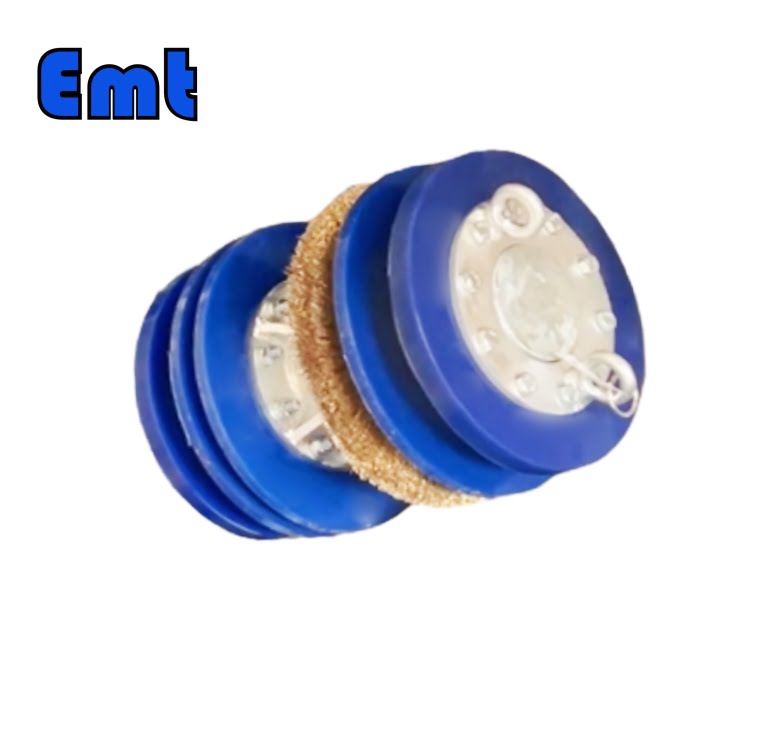
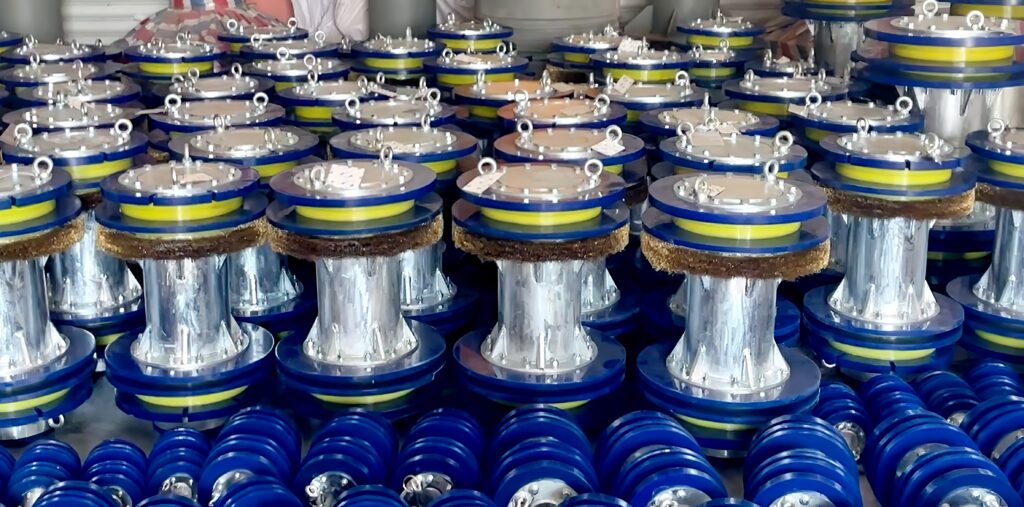
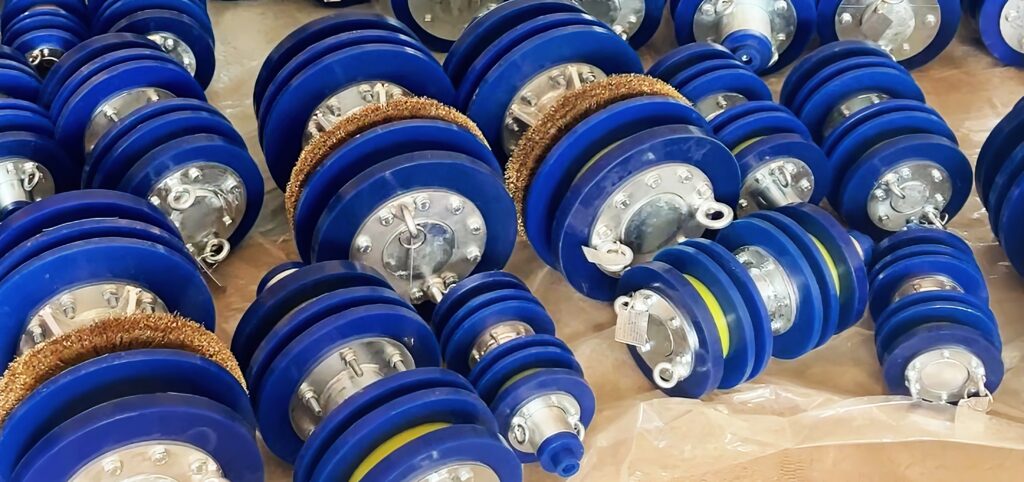
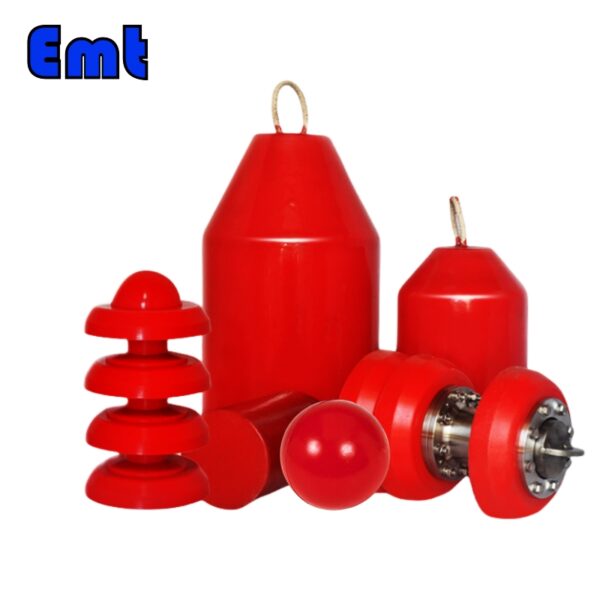
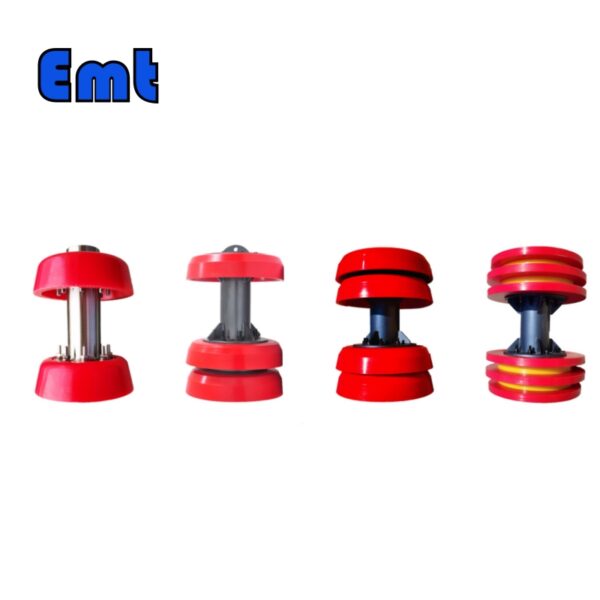

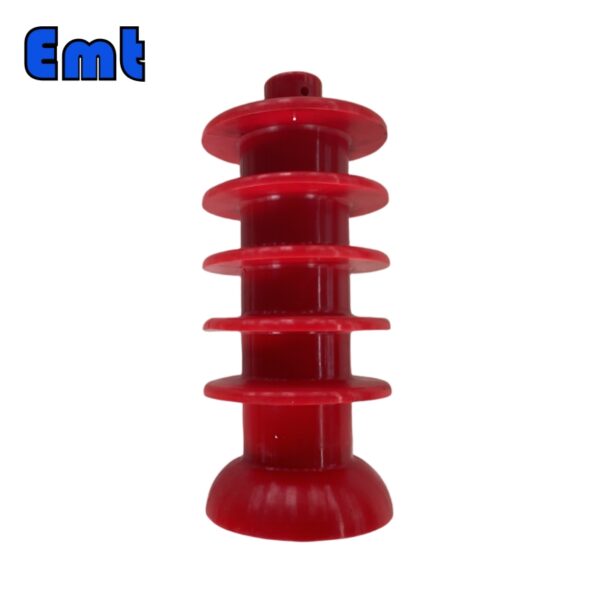
Rezensionen
Es gibt noch keine Bewertungen.